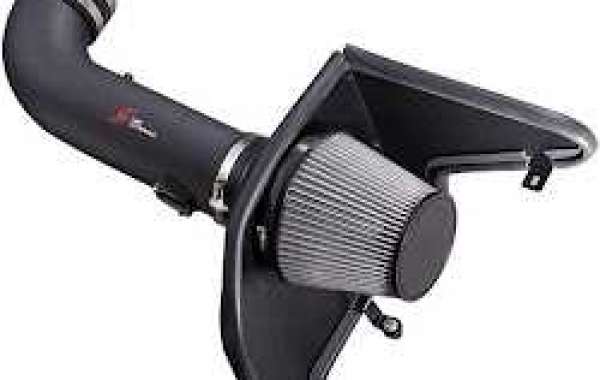Table of Contents
- Introduction: The Role of Air Intake Systems
- What Is a Cold Air Intake?
- Understanding the Components of an Air Intake System
- Benefits of Upgrading Your Air Intake System
- The Impact of Air Intake Systems on Engine Performance
- Choosing the Best Cold Air Intake for Your Vehicle
- Installing an Air Intake System: A Step-by-Step Guide
- Common Misconceptions About Air Intake Systems
- Maintenance Tips for Air Intake Systems
- Conclusion
- Frequently Asked Questions
1. Introduction: The Role of Air Intake Systems
When it comes to optimizing the performance of your vehicle, one component that often gets overlooked is the air intake system. The air intake system plays a crucial role in supplying your engine with the necessary air for combustion. By upgrading to a high-quality air intake system, you can significantly enhance your vehicle's performance, fuel efficiency, and even sound. In this article, we will explore the world of air intake systems, focusing on the benefits, installation process, and misconceptions surrounding them.
2. What Is a Cold Air Intake?
A cold air intake is a modification to the stock air intake system of a vehicle, designed to bring in cooler air from outside the engine compartment. It replaces the factory air filter box and intake tube with a larger, more efficient setup. By drawing cooler air from outside the engine bay, a cold air intake improves airflow, leading to better combustion and increased power output.
3. Understanding the Components of an Air Intake System
An air intake system typically consists of several components, including:
- Air Filter: The air filter is responsible for removing impurities and contaminants from the incoming air. It prevents dust, dirt, and debris from entering the engine, ensuring clean airflow.
- Intake Tube: The intake tube connects the air filter to the throttle body. It is designed to deliver a smooth and unrestricted flow of air to the engine.
- Mass Airflow Sensor (MAF): The MAF sensor measures the amount of air entering the engine. It provides crucial data to the engine control unit (ECU), which adjusts the fuel delivery accordingly.
- Heat Shield: Some air intake systems come with a heat shield to protect the intake from hot engine bay air. It helps maintain lower intake air temperatures, further improving performance.
- Intake Manifold: The intake manifold distributes the air from the intake tube to the individual cylinders of the engine. It ensures even distribution for optimal combustion.
4. Benefits of Upgrading Your Air Intake System
Upgrading your air intake system can bring several benefits to your vehicle:
- Increased Horsepower: By improving airflow and delivering cooler air to the engine, a high-quality air intake system can enhance horsepower and torque output.
- Improved Fuel Efficiency: With better combustion efficiency, your engine can extract more energy from the fuel, leading to improved fuel efficiency.
- Enhanced Engine Sound: A cold air intake system can produce a deeper and more aggressive engine sound, adding to the overall driving experience.
- Better Throttle Response: Upgrading your air intake system reduces restriction in the intake path, resulting in improved throttle response and acceleration.
- Long-Term Cost Savings: While the initial investment may seem high, a quality air intake system can help save money in the long run by improving fuel efficiency and reducing engine strain.
5. The Impact of Air Intake Systems on Engine Performance
Air intake systems have a significant impact on engine performance. By allowing a higher volume of cooler air to reach the combustion chamber, the engine can burn fuel more efficiently. This improved combustion leads to increased power and torque, providing a noticeable boost in performance. Additionally, a well-designed air intake system can reduce the pressure drop and turbulence in the intake path, further optimizing airflow and enhancing engine performance.
6. Choosing the Best Cold Air Intake for Your Vehicle
Selecting the right cold air intake for your vehicle is crucial to achieve the desired performance gains. Consider the following factors when choosing a cold air intake:
- Compatibility: Ensure that the cold air intake is specifically designed for your vehicle's make, model, and engine.
- Material and Construction: Look for a cold air intake made from high-quality materials such as aluminum or carbon fiber, ensuring durability and longevity.
- Filtration: Opt for a cold air intake with a high-quality air filter that effectively captures dirt and contaminants while allowing maximum airflow.
- Research and Reviews: Read customer reviews and conduct thorough research to find a cold air intake that has proven performance gains for your specific vehicle.
7. Installing an Air Intake System: A Step-by-Step Guide
While the installation process may vary depending on the vehicle, here is a general step-by-step guide for installing an air intake system:
- Gather the necessary tools and equipment, including wrenches, pliers, and screwdrivers.
- Disconnect the negative terminal of the battery to ensure safety.
- Remove the stock air filter box and intake tube, carefully disconnecting any sensors or hoses.
- Install the new air intake system, following the manufacturer's instructions.
- Reconnect any sensors or hoses that were disconnected during the removal process.
- Double-check all connections and ensure everything is secure.
- Reconnect the negative terminal of the battery.
- Start the engine and check for any leaks or abnormal sounds.
It is important to note that the installation process may require some mechanical knowledge, and it is recommended to consult a professional if you are not confident in your abilities.
8. Common Misconceptions About Air Intake Systems
There are a few common misconceptions surrounding air intake systems:
- Increased Airflow Equals More Power: While improving airflow is essential, it is not the sole factor determining power gains. The overall design and engineering of the air intake system, including the intake tube and filter, play a significant role in achieving optimal performance.
- Water Ingestion: Many people worry that a cold air intake may allow water to enter the engine during rainy conditions. However, reputable cold air intake systems are designed with safeguards to prevent water ingestion. They typically include splash guards or hydro shields to protect the filter from water damage.
- Check Engine Light: Upgrading to a cold air intake system does not automatically trigger a check engine light. However, if the air intake system is not installed correctly or if the MAF sensor is not properly calibrated, it can lead to issues and trigger a check engine light. It is essential to follow the manufacturer's instructions during installation and ensure proper calibration of the MAF sensor if required.
9. Maintenance Tips for Air Intake Systems
To keep your air intake system in optimal condition, follow these maintenance tips:
- Regularly inspect the air filter and clean or replace it as necessary. A dirty or clogged filter can restrict airflow and reduce performance.
- Check the connections and clamps of the air intake system to ensure they are tight and secure.
- Inspect the intake tube and heat shield for any signs of damage or wear. Replace any damaged components promptly.
- Consider performing periodic inspections of the MAF sensor and cleaning it if necessary. A dirty MAF sensor can affect engine performance.
10. Conclusion
In conclusion, upgrading your vehicle's air intake system can have a significant impact on its performance and efficiency. By allowing a higher volume of cooler air to reach the engine, a quality air intake system enhances combustion, resulting in increased horsepower, improved fuel efficiency, and better throttle response. When choosing a cold air intake, consider factors such as compatibility, construction materials, and filtration efficiency. Remember to follow the manufacturer's instructions carefully during the installation process or consult a professional if needed. Additionally, proper maintenance of your air intake system, including regular inspection and cleaning, will ensure its optimal performance and longevity.
11. Frequently Asked Questions
1. Will installing a cold air intake void my vehicle's warranty?
In most cases, installing a cold air intake will not void your vehicle's warranty. However, if a failure or issue arises that is directly caused by the cold air intake, it may not be covered under warranty. It is always recommended to check your vehicle's warranty terms or consult with the manufacturer for specific details.
2. Can a cold air intake improve fuel efficiency?
Yes, a cold air intake can improve fuel efficiency. By optimizing airflow and enhancing combustion, the engine can extract more energy from the fuel, resulting in improved fuel efficiency.
3. Do I need to tune my vehicle after installing a cold air intake?
Not all vehicles require tuning after installing a cold air intake. However, some vehicles may benefit from recalibrating the engine's parameters to maximize the performance gains from the cold air intake. It is advisable to consult with a professional tuner or follow the manufacturer's recommendations.
4. How often should I clean or replace the air filter in my cold air intake?
The frequency of cleaning or replacing the air filter depends on various factors such as driving conditions and environmental factors. As a general guideline, it is recommended to inspect the air filter every 12,000 to 15,000 miles or annually, and clean or replace it as necessary.
5. Can a cold air intake cause damage to my engine?
When properly installed and maintained, a cold air intake should not cause damage to your engine. However, it is important to choose a reputable brand, follow the installation instructions diligently, and ensure proper maintenance to avoid any potential issues.










